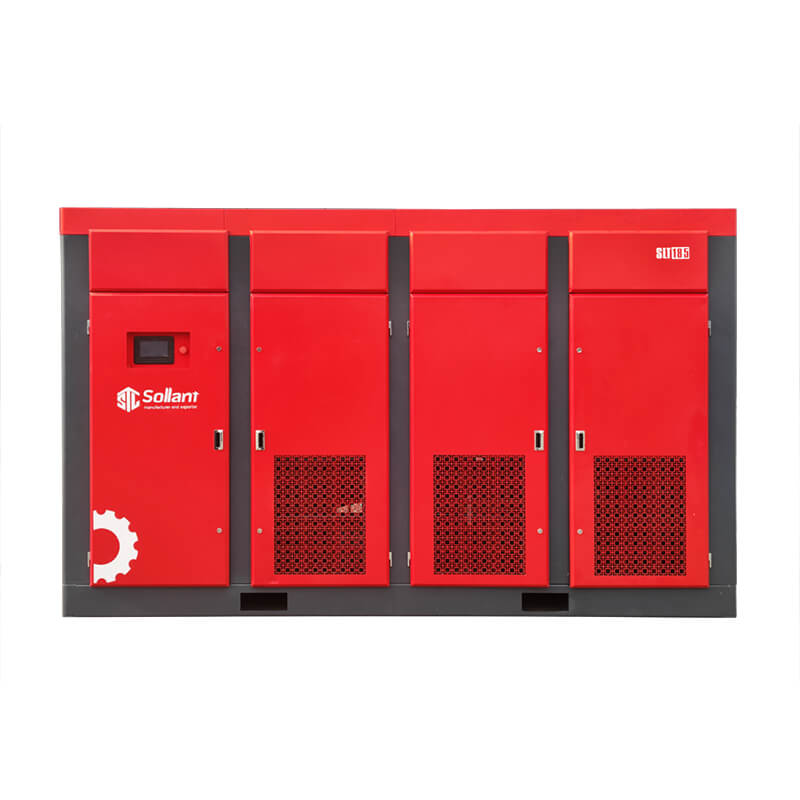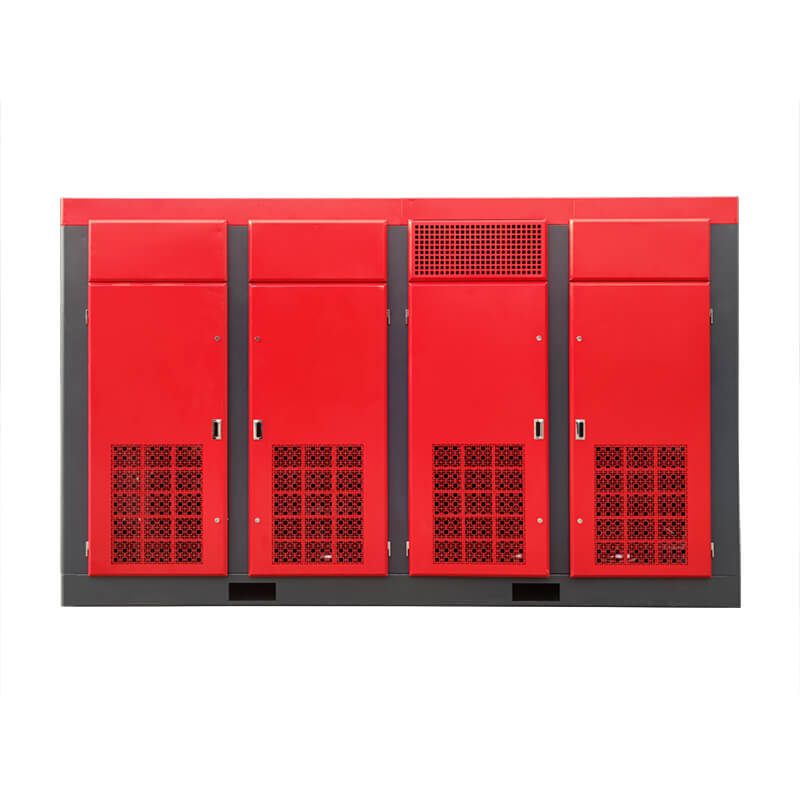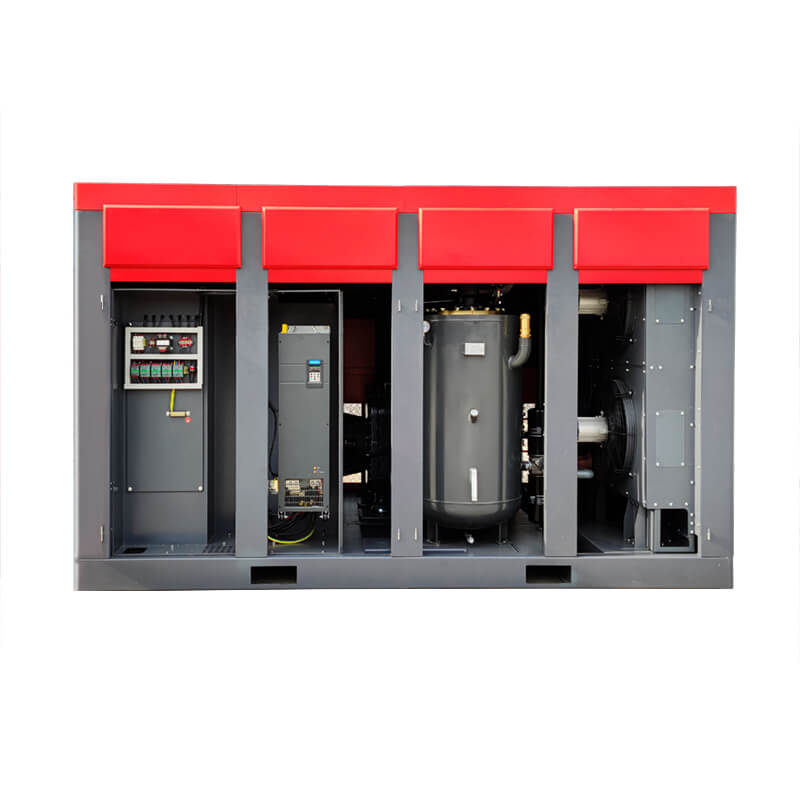Types and differences of compressors

There are different types of compressors that move air into the chamber. Most compressors are positive displacement compressors, in which by forcing air into a chamber, the volume is reduced to compress the air. A reciprocating or piston air compressor pumps air by directing it into a cylinder chamber using a piston and a check valve. Most commercial compressors are one or two stage compressors. Single stage compressors are used in the pressure range of 70 to 100 psi. For larger pressure ranges of 100 to 250 psi, a two-stage compressor is used. Single acting compressors use only one side of the piston and double acting compressors use both sides of the piston. The compressor has a pressure limit which, once reached, will shut off the compressor. Air will remain in storage until used for kinetic applications.

Rotary screw compressors use helical screws to direct the air in the chamber. By moving and compressing air, the screw functions like a piston. The most common rotary screw compressors are single-stage screw or screw oil-immersed screw air compressors. These compressors have no valves and are oil cooled. The oil seals the internal gaps and since the cooling takes place within the compressor, the operating temperature does not rise to extreme temperature levels.

Types and Differences of Negative Discharge Compressors or Dynamic compressors are usually centrifugal compressors. Centrifugal force is created using a rotating impeller, which accelerates and decelerates the trapped air, thereby pressurizing it. In order to control the capacity of the centrifugal compressor, the inlet guide vanes are adjustable. The closing of the guide vanes reduces volume flow and capacity.
Sollant Group-Professional Compressed Gas Solutions Provider


.jpg)




